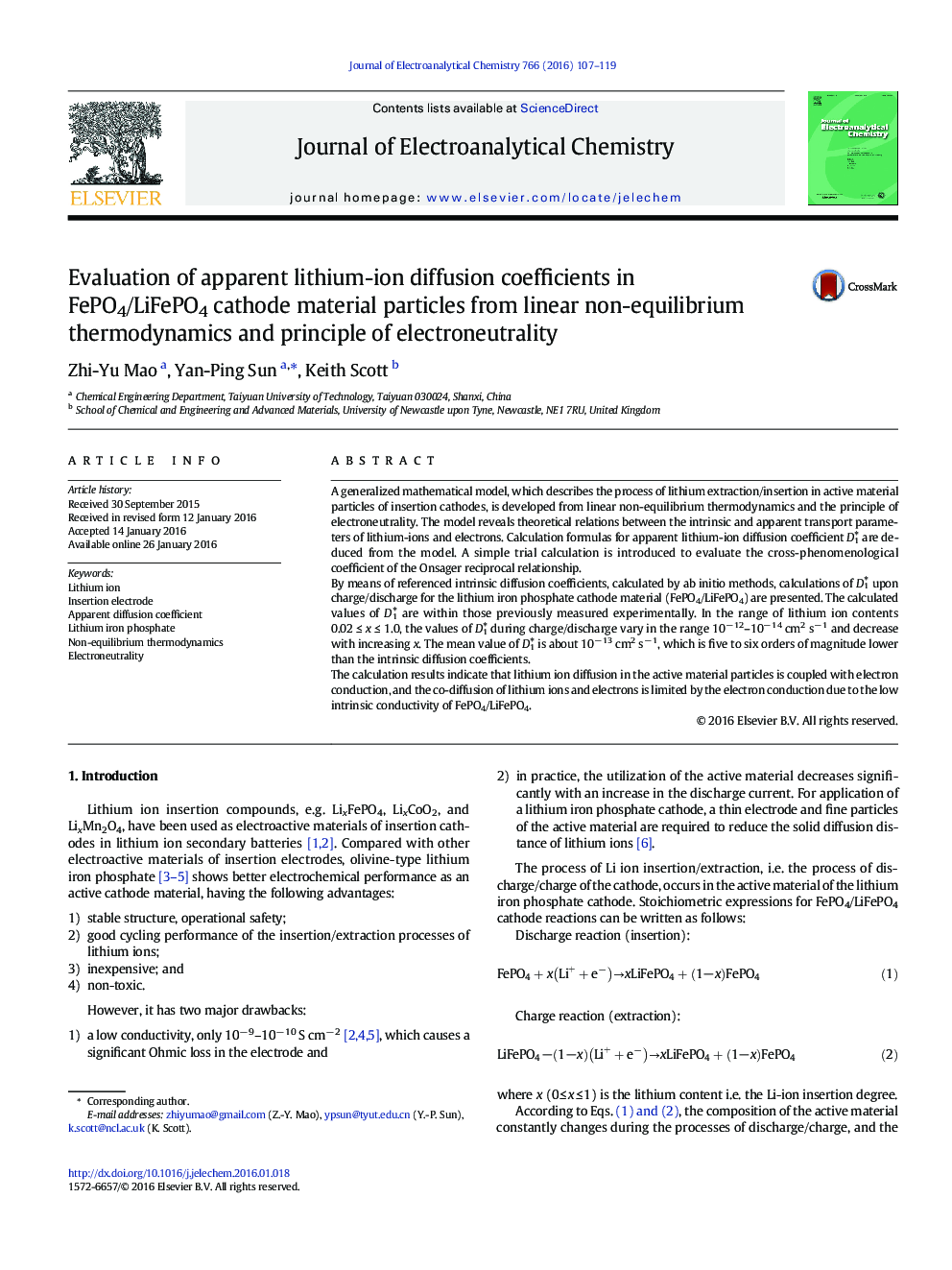| Article ID | Journal | Published Year | Pages | File Type |
|---|---|---|---|---|
| 218016 | Journal of Electroanalytical Chemistry | 2016 | 13 Pages |
•We model the process of lithium insertion/extraction in an insertion electrode.•The model is based on nonequilibrium thermodynamics and electroneutrality principle.•A trial calculation method is introduced to evaluate the Onsager cross-coefficient.•Apparent Li-ion diffusion coefficients in FePO4/LiFePO4 are calculated in detail.•The co-diffusion of lithium ions and electrons is limited by the electron conduction.
A generalized mathematical model, which describes the process of lithium extraction/insertion in active material particles of insertion cathodes, is developed from linear non-equilibrium thermodynamics and the principle of electroneutrality. The model reveals theoretical relations between the intrinsic and apparent transport parameters of lithium-ions and electrons. Calculation formulas for apparent lithium-ion diffusion coefficient D1⁎ are deduced from the model. A simple trial calculation is introduced to evaluate the cross-phenomenological coefficient of the Onsager reciprocal relationship.By means of referenced intrinsic diffusion coefficients, calculated by ab initio methods, calculations of D1⁎ upon charge/discharge for the lithium iron phosphate cathode material (FePO4/LiFePO4) are presented. The calculated values of D1⁎ are within those previously measured experimentally. In the range of lithium ion contents 0.02 ≤ x ≤ 1.0, the values of D1⁎ during charge/discharge vary in the range 10− 12–10− 14 cm2 s− 1 and decrease with increasing x. The mean value of D1⁎ is about 10− 13 cm2 s− 1, which is five to six orders of magnitude lower than the intrinsic diffusion coefficients.The calculation results indicate that lithium ion diffusion in the active material particles is coupled with electron conduction, and the co-diffusion of lithium ions and electrons is limited by the electron conduction due to the low intrinsic conductivity of FePO4/LiFePO4.
